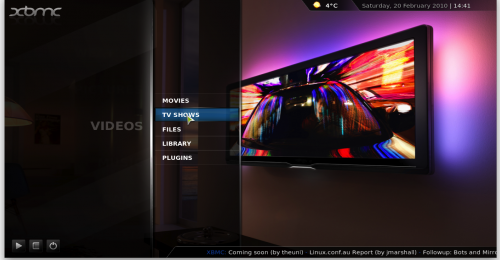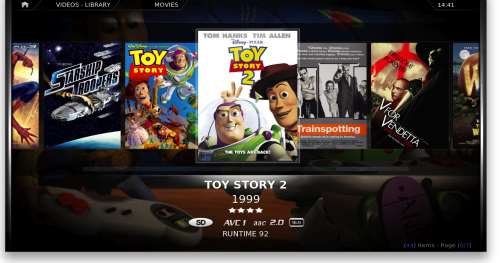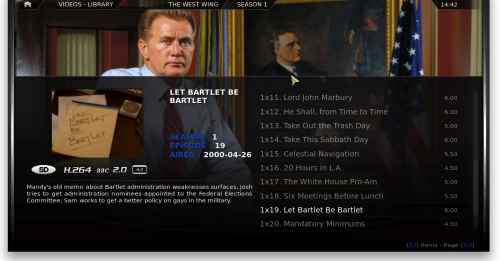Welcome to the seventh of a series of posts on setting up a Mac Mini Media Centre. This post will look at the daddy of open source media centre app’s, XBMC. When reviewing Plex and Boxee I mentioned that both were forks from XBMC, or Xbox Media Centre to give it it’s full title. In 2004 Xbox Media Centre was born out of another well known app – Xbox media Player. Both app’s were designed as media playback applications for Microsoft’s first console, the Xbox.
When I say Xbox, of course I mean a chipped Xbox. Chipping the Xbox and installing software like XBMC really showed the potential of a games console to act as a media centre device. No restriction on codecs, a great community constantly upgrading the software meant my chipped Xbox was untouchable for quite a few years. In fact it’s still a great media player today except the chip on the original Xbox couldn’t handle HD which for me is a deal breaker. So what does XBMC offer compared to the forked products?
On first pass you can see that Plex and XBMC are very similar products. They share many of the same menu’s, options and skins which in some way isn’t a surprise although Boxee is very different in use than XBMC. In fact when you install the correct skin in XBMC you could be forgiven in thinking that XBMC is exactly the same as Plex. Almost. If you want to read about the functionality that XBMC offers, re-read the Plex review. There are a few differences though. Media shares are easier to add to XBMC and I found the menu’s generally a bit easier to use and follow in XBMC.
TV and Video’s are also browsable using the same rich content that the scrapers bring to Plex (unlike Boxee) but Music doesn’t integrate with iTunes in the same way as Plex. In fact the biggest difference I could see is that Plex has the Plex media Server which acts as a bridge between Plex and your locally stored media. It’s this that lifts Plex above XBMC in day to day use.
XBMC can also be extended via scripts and plugins. These aren’t as well organised as in Plex or Boxee but there is arguably a wider variety that allow you to access online content not only via audio and video but also via torrents and newsgroups which can integrate into XBMC. This won’t be for everyone though and I again prefer the easier to use accessibility of Plex and Boxee when it comes to installing and using plugins. With full skin support and some great skins available the look and feel is really down to personal preference and there are more skins available than in Plex which does have ports of the popular XBMC skins.
There are two iPhone app’s that work with XBMC. XBMC remote (opens in iTunes) is similar to the Boxee remote in that it allows for full control of XBMC from the iPhone. It has two modes – standard which controls XBMC via buttons and gesture which again I found a bit fiddly to use. It costs £1.79 but if you like XBMC it’s cheap for the features it gives you. Another app of more interest is XBMC Music Streamer (opens in iTunes) which allows you to stream music from XBMC to your iPhone. Again the app is £1.79 and although I’ve not tried it myself it’s got good reviews on the App Store an on other web sites so looks a good choice if you ned to stream your music collection.
Out of the three Media Centre tools I’ve used XBMC probably has the most active forums/developments but some of the developments are also in fairly obscure area’s. With a fully set-up XBMC and Plex it can be hard to tell the difference but for day to day usage I prefer Plex and will be sticking to that as my media player of choice. If you want to dabble with scripts and get into the guts of your media software then XBMC is the better choice. Either way, your spoiled for choice.
The next post in out Mac Mini series will look at other useful media applications that you will find useful alongside Plex, Boxee or XBMC. Until then, happy viewing.



